Near Bodø in Northern Norway, the world's strongest tidal current is an impressive sight. Here's why you should visit the Saltstraumen maelstrom, and how to get there.
Norway is packed full of natural wonders. From the epic mountain ranges to the glacial fjords, nature lovers are never short of something to see and do. But there's plenty of hidden surprises too.
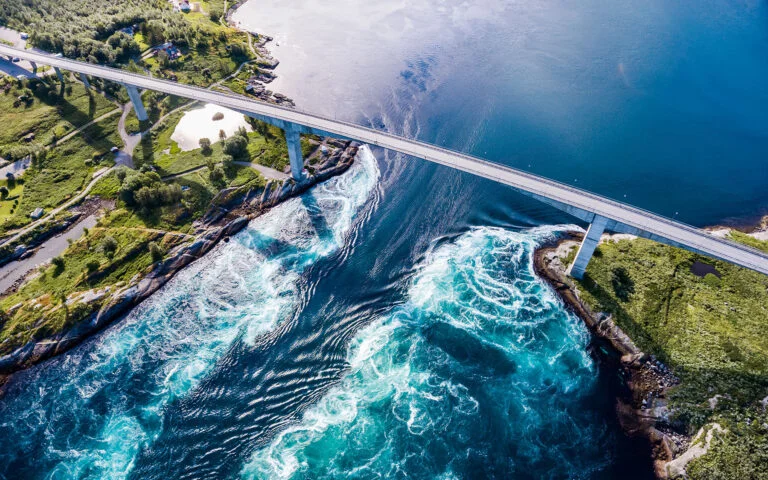
The tidal current and whirlpools of Saltstraumen near Bodø in Northern Norway is one such example. Water flows through the narrow strait at immense speed, creating a remarkable maelstrom that has to be seen to be believed.
I have to admit I was sceptical the first time I went, but seeing the real thing in person is a truly impressive experience.
I've been twice now at different times of the year. Both times I've been lucky enough to be guided by a local (thanks, Ray!) so didn't have to worry about when to go or where the best places were to see the action.
But for those of you who will be making an independent trip, you'll need to plan to ensure you're there are at the best time, whether you're travelling there over land or by fast RIB boat. This article is for you.
Video of Saltstraumen
Pictures and words don't do the area justice, so on my last visit I made this video. It only takes 60 seconds to watch!
Hopefully that video gave you a better feel for what the area is like when the current is at its strongest. Now, read on for the details.
What is Saltstraumen?
Saltstraumen is a narrow strait that connects the Saltfjord to the large Skjerstadfjord between the islands of Straumøya and Knaplundsøya. At its narrowest, the strait is just 150 metres wide.
With wide bodies of water on both sides, the strait is a major bottleneck for the tidal water. Every six hours, tides push or pull the water through the straight at immense speed, up to 37 kph at its strongest.
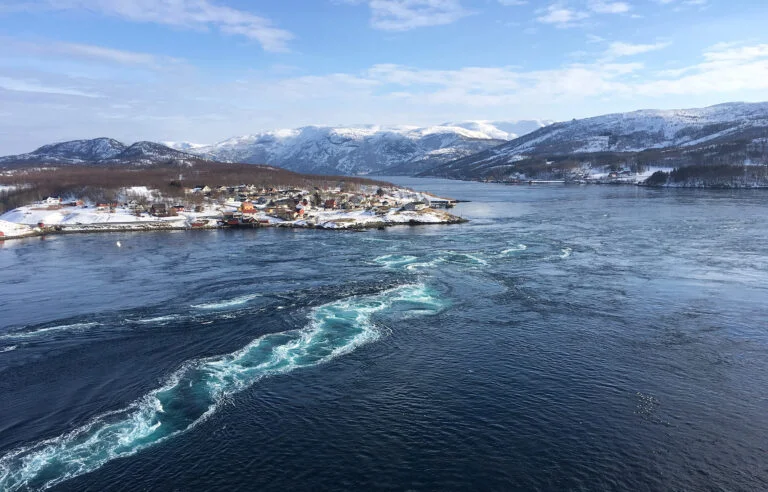
The height difference between the two ends of the strait is remarkable. When the tide is at its strongest, the height difference can be up to one metre, and is easily seen by the human eye.
But the area is best known for the distinctive whirlpools created by the fast-flowing water. Constantly changing in shape, they are mesmerising. And also dangerous! These mighty whirlpools can be up to 10 metres in diameter and 4-5 metres deep.
Read more: Saltstraumen in the Winter
The churning water lifts fish and other seafood close to the surface. This attracts great numbers of birdlife to feast on the easy pickings. It's also the likely reason that humans settled here 10,000 years ago, the earliest known settlement in and around Bodø.
Where to see the Saltstraumen maelstrom
If you are travelling there on land, there are several great vantage points to appreciate the maelstrom. The two most popular are from the shoreline down from the parking area and on top of the bridge.
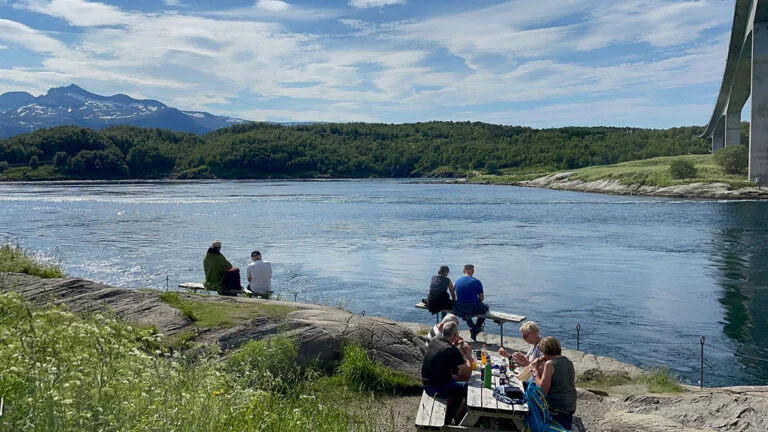
The short walk down to the water from the parking lot is very pleasant including several well-kept cabins. At the water's edge, you will immediately see the surprising speed of the water–if you're there at the peak time, of course.
It's also worth looking for the geological features known as giant's kettles. These deep cylindrical holes in rocks were formed during the last ice age by swirling stones in meltwater rivers through the ice.
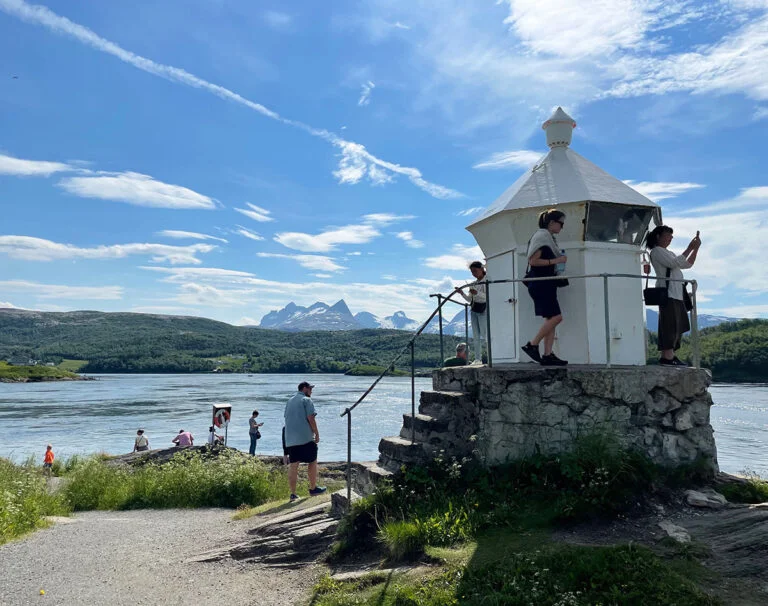
The old lighthouse provides a raised vantage point, while there's picnic tables to rest and enjoy the view. That view, by the way, is made all the more impressive by the distant mountain peaks.
The second good vantage point is from the top of the bridge. Cars cannot stop on the bridge but there is a footpath along the side of the road, so you'll need to walk from the parking area.
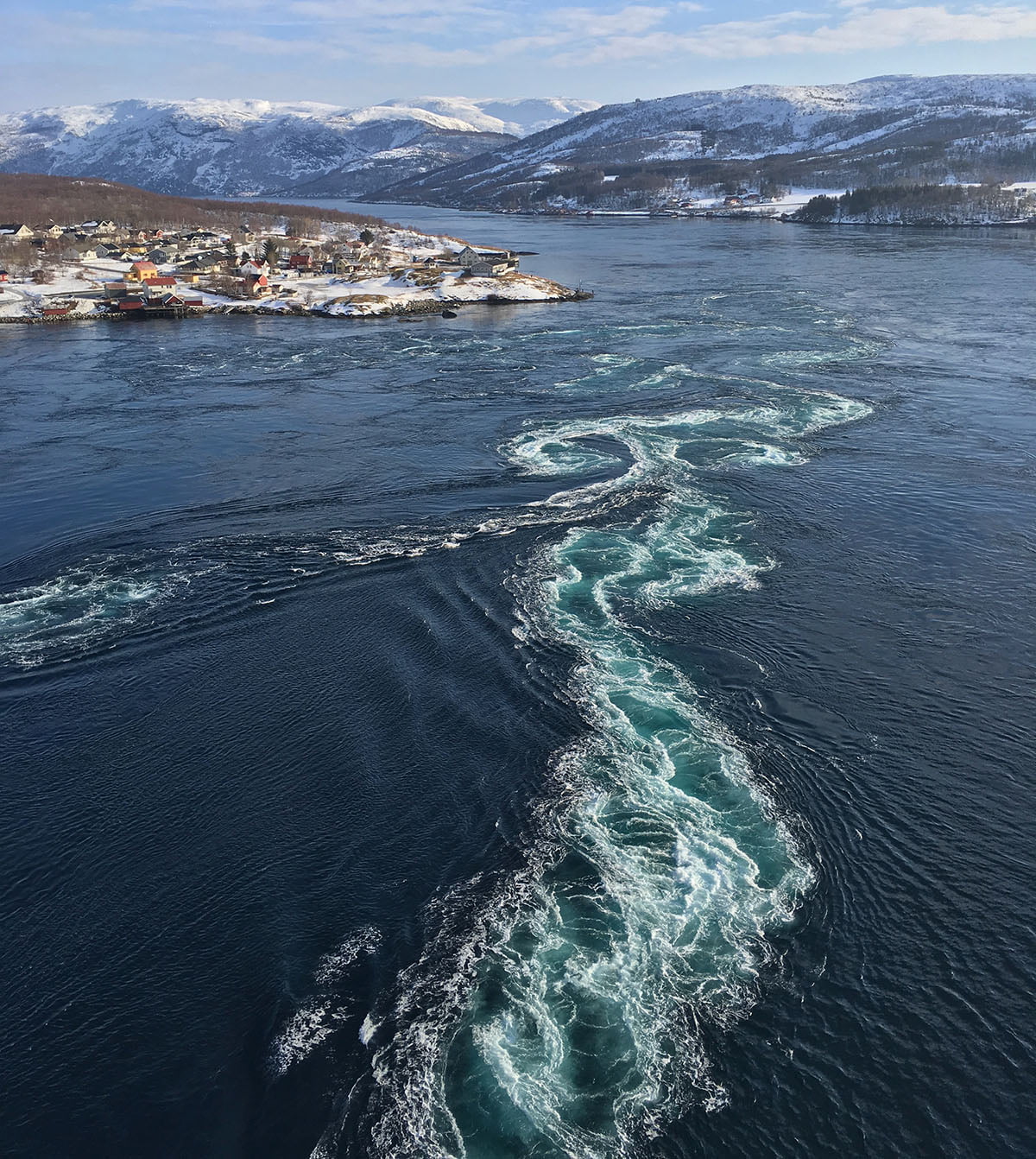
The view from the top of the bridge offers a fantastic perspective of the whirlpools. It's well worth the walk if you have the time.
Saltstraumen bridge
Spanning the strait, the Saltraumen bridge ensures safety for people trying to cross the dangerous water. Prior to its opening in 1978 bridge, ferries had to time their crossings to coincide with weak currents.
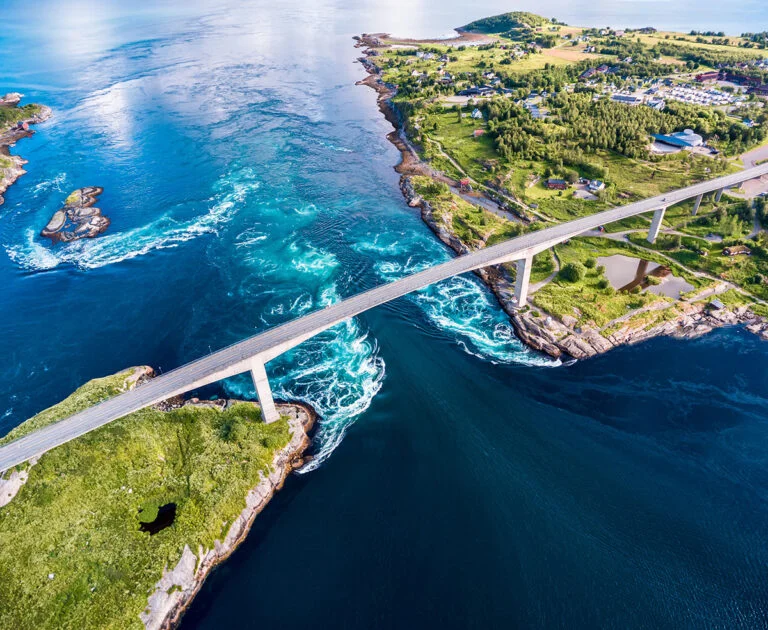
The Norwegian Directorate for Cultural Heritage (Riksantikvaren) has since given the bridge protected status.
Wildlife at Saltstraumen
Saltstraumen is famous for its abundant birdlife and marine life. Within the water, good stocks of cod, halibut and monkfish (among others) make it a top choice for fishing in Norway.
Underwater, an incredible diversity of shellfish, crustaceans and coral reefs are waiting to be discovered. But this is no place for inexperienced divers. The same is true for birds. Eiders are the only ones capable of diving for mussels in the strong currents.
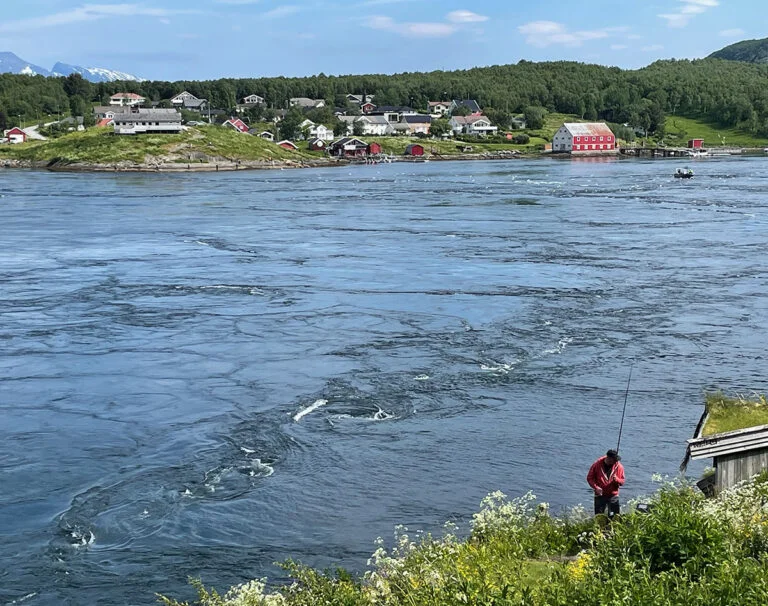
Many seabirds swoop down to the water when the maelstrom is at their strongest. The surrounding region is home to magestic sea eagles, puffins and eider ducks, which may be spotted on boat trips. A small whale porpoise is sometimes spotted, too.
Timing of the Saltstraumen maelstrom
If you are going to make the effort to go to Saltstraumen, you should try to visit within an hour of when the current will be at its strongest. As a natural tidal phenomenon, these times are known well in advance.
Every six hours the current is at its strongest, flowing one way or the other. At the midway point when the current changes direction, there isn't a great deal to see–unless you are diving or snorkelling of course.
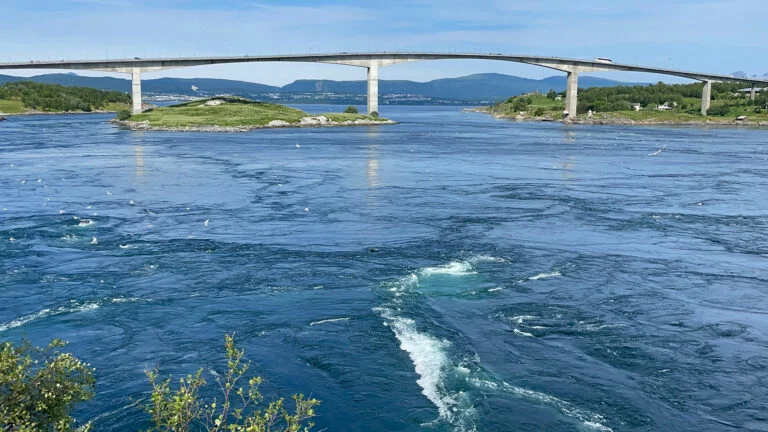
Check when the current will be at its strongest using the pre-published timetables on Visit Bodø. These are very useful when booking boat trips, or planning which bus departures to take.
Boat trips to Saltstraumen
So far I've spoken about visiting the strait on land. It's also possible to visit via boat from Bodø. Fast RIB boats travel to the strait several times per day from the city ferry terminal and also for Hurtigruten visitors.
I haven't taken a RIB boat to Saltstraumen so I can't speak from first hand experience. However, if you visit when the current is strong, it must be an exciting experience. There's also the chance to see intriguing birdlife on the way there.
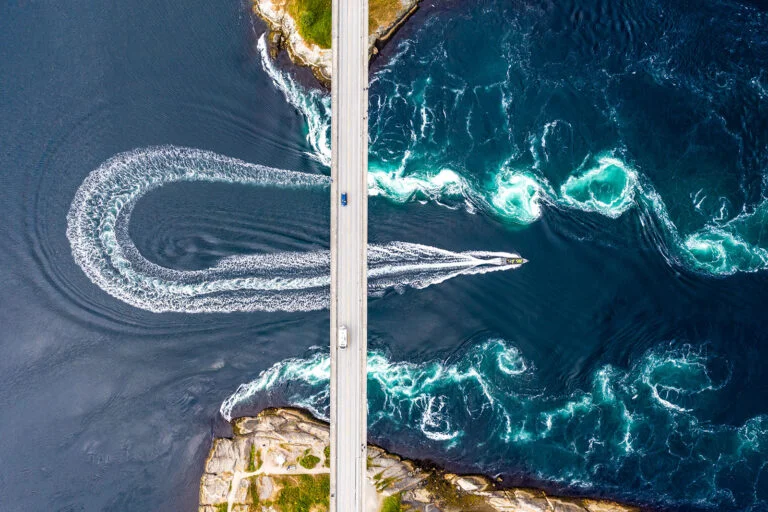
Do note that regular departures are based on the ideal timetable to visit, so you should always get a good experience. That's not always the case with Hurtigruten tours, as they are by their nature on a fixed timetable. Bear this in mind before you book!
How to get to Saltstraumen by land
As the crow flies, Saltstraumen is just 10km south-east of Bodø. However, to get there on land you have to drive 30km. If you don't have a car, several buses per day travel from the city to Saltstraumen, usually numbered 200 or 300.
At the time of writing, it costs NOK 84 for the 45-minute journey. If you download the ticketing app, you save NOK 20. Check the routes, times and prices with Reis Nordland.
A taste of Saltstraumen
A local company Arctic Salt produces gourmet salt from Saltstraumen using traditional methods. Everything from the production to the drying, sorting, packing and labelling is done by hand.

Local chocolatier Craig Alibone utilises the salt in his signature salt caramel chocolates, featuring a swirl design inspired by the Saltstraumen whirlpools.
The salt can be bought from Arctic Salt's online store and selected stockists around the city, while the chocolate is best enjoyed from Craig's pâtisserie in the centre of Bodø.

